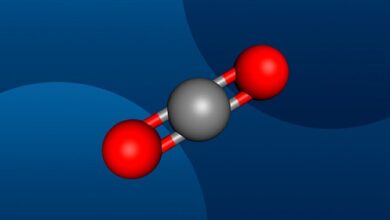Difference between eukaryotic cell and prokaryotic cell Similarities and FAQs
Eukaryotic cell and Prokaryotic cell
In this article we will provide you the Difference between eukaryotic cell and prokaryotic cell Similarities and FAQs.
What does eukaryotic cell mean?
The eukaryotic cell is a cell characterized by having a well-defined nucleus, surrounded by a nuclear membrane. These cells contain other components such as mitochondria, lysosomes and ribosomes. Most multicellular organisms are made up of these types of cells . Among them are those of muscle, nervous and epithelial tissue. Furthermore, some eukaryotic cells , such as yeast and some unicellular protozoans, are considered independent organisms capable of carrying out all their vital functions. Compared to prokaryotic cells (bacteria), the interior of the eukaryotic cell is highly organized into separate compartments called cellular organelles.
What does prokaryotic cell mean?
prokaryotic cellsThey are the simplest forms of life known. They are composed of a single cell without a nucleus and do not have organized internal membranes. They are found in all environments, from soil to the surface of oceans, and even within the human body as part of the normal microbiota. Most are microscopic bacteria, although there are some larger single-celled organisms such as protozoa. Prokaryotic cells are characterized by their simple cellular structure: a circular genome associated with proteins that is encapsulated in an outer envelope to protect it.
Similarities
Both eukaryotic cells and prokaryotic cells are the two main types of cells in nature. Both have a cell membrane that separates the internal material from the external environment, as well as structures to maintain their structure and function. However, there are some important differences between them; For example, eukaryotic cells contain a membrane-enclosed nucleus that contains the cell’s genetic material, while Prokaryotic cells do not. Furthermore, most eukaryotic cells divide using mitosis to produce two daughter cells that are identical to themselves while many of the prokaryotic cells divide using binary fission to produce two daughter cells that are identical to themselves. On the other hand, both types contain ribosomes that make specific proteins to help with their basic functions. In general, both Types of Cellules share many similar characteristics but there are some clear differences between them as well.
Differences between eukaryotic cell and prokaryotic cell
Eukaryotic cells are cells that contain a nucleus, organelles, and a cell membrane. They are made up of genetic material enclosed in the nucleus along with other compartments such as lysosomes, mitochondria and storage granules. Prokaryotic cells , on the other hand, lack Each type of memory has its own operation, although all of them cooperate to carry out a complete memorization process. This is complex structures within the cytoplasm as well as a defined nucleus. The genetic material is freely dispersed in the cytoplasm although there are some common exceptions. Prokaryotes also have thicker cell walls to provide additional mechanical stability to the cell. They are usually solitary but can group together to form colonies where individuals work together to survive.
Frequent questions
What is a prokaryotic cell?
A prokaryotic cell is a cell without a nucleus that is commonly found in single-celled organisms, such as bacteria and some protists. These cells have a single circular genetic material called DNA, but they lack the nuclear envelope present in eukaryotic cells. Instead of being contained within the nuclear envelope, the genetic material spreads freely through the cytoplasm. Prokaryotic cells are much smaller than their eukaryotic counterparts; diameters are usually less than 1 µm (micrometer).
What is a prokaryotic cell and what are its characteristics?
A prokaryotic cell is a type of primitive cell that lacks a defined nucleus and is found in single-celled organisms, such as bacteria and algae. Unlike eukaryotic cells, prokaryotes do not have nuclear membranes or separate organelles. General characteristics include: – Reduced size between 0.1 to 5 µm – Does not have a complex cellular structure (no differentiated cytoplasm) – Simple circular genome with free DNA within the cytoplasm – Lack of nuclear membrane to separate genetic materials from the rest of the cell – Small ribosomes (70S) for protein synthesis
What are the functions of the prokaryotic cell?
Prokaryotic cells have several important functions. These include: -Energy production through photosynthesis or respiration. -Regulation of the internal environment, such as pH and salt concentration. Cellular metabolism to produce the components necessary for cell growth and development. -Mobility using flagella or pilis. –Protein biosynthesis using mRNA transcription and translation of genetic DNA into specific proteins. -Asexual reproduction by binary division, budding and endospores formed by gram positive bacteria.
What are the types of prokaryotic cells?
The types of prokaryotic cells are bacteria, archaea, and unicellular algae.




